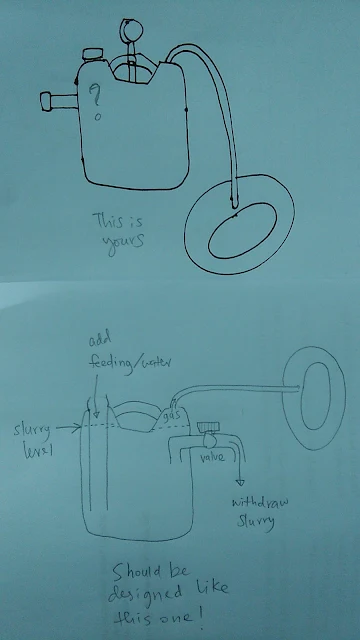Ready to turn cow poop into cooking gas? Yep, you read that right!
If you’ve got a home biogas system or you’re thinking about building one, the first step is getting it up and running with a biogas starter culture. Sounds technical, but don’t worry—this is a super easy, DIY method that works like a charm. It’s all about giving your biogas digester the bacteria it needs to start producing methane gas from food waste.
In this guide, I’ll show you how to make a biogas starter culture using cow dung. It’s cheap, beginner-friendly, and something I use on my own small biogas systems at home and at the office. Once you set this up, your digester will be pumping out biogas in no time!
What’s a Biogas Starter Culture (And Why You Totally Need One)?
Think of a starter culture like the “probiotics” for your biogas digester. Without it, your system’s just sitting there. But with the right bacteria—aka methanogens from fresh cow dung—your digester will be converting waste into renewable energy (hello, free cooking gas!).
So if you’re wondering how to start a biogas digester at home, this is step one: give it life with a cow dung biogas starter.
What You’ll Need to Make a DIY Biogas Starter
You don’t need fancy gear. Here’s the simple stuff:
- Fresh cow dung (this is the hero ingredient for making biogas starter culture)
- Clean water (non-chlorinated so it doesn’t kill the bacteria)
- A bucket or drum (for mixing your cow dung slurry)
- A stick for stirring
- Gloves (optional… but I highly recommend!)
Step-by-Step: How to Make a Biogas Starter Culture with Cow Dung
1. Collect Fresh Cow Dung
Fresh is key! The methane-producing bacteria are most active in fresh cow dung, so try to collect it on the same day. You’ll need about 10 to 20 kilos, depending on the size of your home biogas digester.
2. Mix It into a Cow Dung Slurry
Grab your bucket and mix the dung with clean water. Use a 1:1 ratio—one part dung, one part water. Stir it until it looks like a smooth slurry. This is your biogas digester starter.
Fun fact: this slurry is loaded with methanogens that break down organic material and release biogas, mostly made up of methane.
3. Let It Sit and Pre-Digest (Optional but Helpful!)
Leave your cow dung slurry in the bucket for 3 to 5 days. This gives the bacteria time to multiply and get hyped up before they move into your biogas digester. Keep it shaded and loosely covered.
4. Pour the Starter Culture Into Your Biogas Digester
Now pour that powerful biogas starter culture into your digester. Aim to fill about a quarter to a third of your system. This lays the bacterial foundation that’ll keep your biogas production steady.
5. Start Feeding—But Go Slow!
For the first couple of weeks, feed your home biogas digester small amounts of soft, easy-to-digest food waste. Think veggie scraps, fruit peels, and blended leftovers. No meat or oils yet—your bacteria need to get comfy first!
Pro Tips for Successful Biogas Production
- Keep your digester warm (30°C to 40°C). If it’s too cold, your methane production will slow way down.
- Stir it occasionally to keep things mixed and happy.
- Be patient! It takes about 7 to 14 days before you start seeing that precious biogas.
FAQs About Biogas Starter Cultures (For Real People Like You!)
How long does it take to produce biogas after adding the starter?
Usually, you’ll see gas bubbling up in 7 to 14 days. The first gas is mostly CO₂, but soon you’ll get that good methane-rich biogas.
Can I use old cow dung for my biogas digester starter?
Nope! Old or dried dung won’t have enough active methane-producing bacteria. Fresh dung is a must for a healthy starter culture.
What’s the best starter for a biogas digester?
Fresh cow dung is the easiest and most reliable starter culture. Buffalo, goat, and pig dung can work too, but cow dung is the go-to for most DIY biogas systems.
Why isn’t my biogas system producing gas?
Check if your biogas digester startup has the basics right:
- Is the temperature warm enough?
- Are you feeding it the right things?
- Is your pH balanced (between 6.5 and 7.5)? Sometimes, you just need to give it a little time and TLC.
Wrapping It Up: Your Biogas System is Ready to Rock!
And there you go! Making your own biogas starter culture with cow dung is easy, affordable, and super effective. Once your home biogas system gets going, you’ll be turning kitchen scraps and food waste into clean, green renewable energy.
If you give this DIY cow dung slurry method a try, let me know how it works out! Drop your questions in the comments, or tag me with pics of your biogas digester in action. I love seeing how people are turning waste into power!


